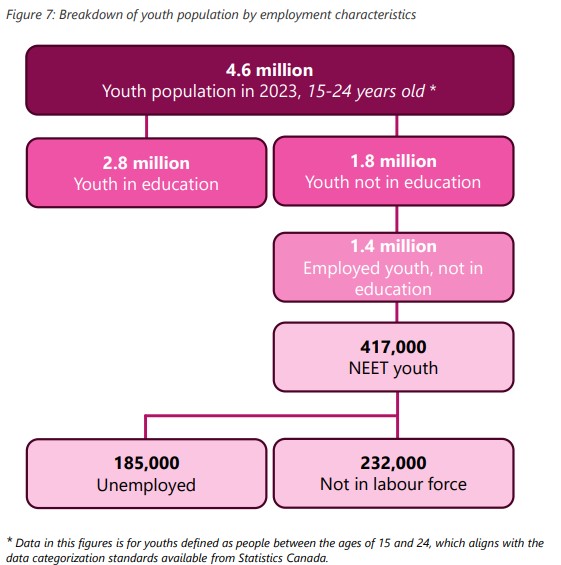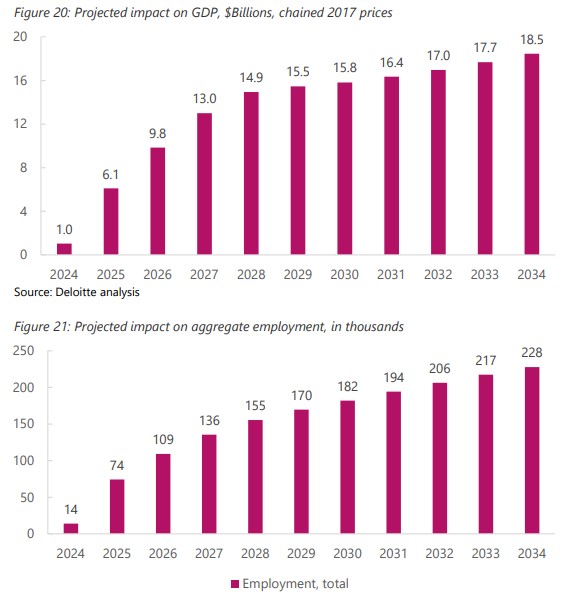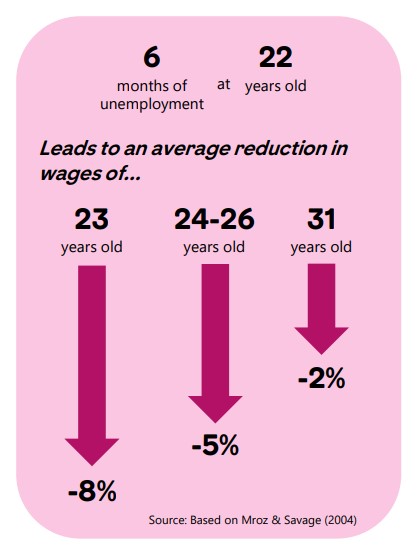Unemployment 'delays the accumulation of productive skills, work experience and knowledge'

There is an urgent need for the federal government and other stakeholders to address the problem of youth unemployment in the country, according to a recent report.
Overall, Canada’s failure to address its youth unemployment crisis will cost the country $18.5 billion in GDP by 2034, find Kings’ Trust and Deloitte.
Youth unemployment reached 14.5% in August, the highest it has been in a decade. And 850,000 young people are currently not working, in training or in school.
Source: Deloitte
In October, Canada’s labour market grew by just 15,000 jobs (+0.1 per cent), a minor gain that was largely offset by population growth, leading to a 0.1 percentage point decline in the employment rate to 60.6 per cent, according to data from Statistics Canada (StatCan).
4 key adjustment to lower youth unemployment
The reduction of youth under and unemployment in Canada through four supply-side channels is projected to add $18.5 billion to Canada’s real GDP (measured in chained 2017 prices) by 2034, a gain of 0.63% over current projections, according to Kings’ Trust and Deloitte.
It would also increase employment by 228,000 over the same period, corresponding to an increase of 0.99% in aggregate employment.
Source: Deloitte
That, however, depends on the federal government, businesses and other stakeholders addressing youth unemployment through four key adjustments, according to the report:
- We assume that all youth who are currently out of the labour force due to economic reasons (discouraged, awaiting recall/reply, etc.) are able to join the labour force.
- We assume that some involuntary part-time young workers (ages 15-24) find full-time employment, such that the proportion of involuntary part-time workers in the youth population equals that in the prime working age population (ages 25-54).
- We assume that the natural rate of unemployment among young workers is equivalent to that of the rest of the population.
- We incorporate productivity gains as a result of escalation in work experience from the assimilation of youth in employment. Economic research demonstrates that worker productivity increases with work experience: a more experienced workforce is a more productive workforce and higher productivity results in more economic output. We use the impact of work-related training to estimate the macro-level productivity impact of the training and on-the-job skills gained by the now-employed young workers in this counterfactual scenario.
How does unemployment affect youth?
It’s important for the government to address youth unemployment because a period of unemployment early in a worker’s career leads to long-lasting negative effects on an individual's future earnings, according to the report.
“One of the primary drivers of the negative impact from unemployment is that it delays the accumulation of productive skills, work experience and knowledge. This means young people miss out on developing their skills and growing their professional network, known as a person’s human and social capital, which are key determinants of wages,” according to the report.

Source: Deloitte
Overall, 51% of employees report feeling underpaid, according to a previous report from Robert Half.
To address the issue of youth unemployment, governments, educational institutions, and businesses need to collaborate and implement robust policies and undertake effective initiatives, according to the report.
“This may include investing in the education and skills necessary for successful employment, promoting entrepreneurship, creating job opportunities, and supporting youth-led initiatives,” concludes the report titled Failure to Launch: The Economic and Social Impacts of Youth Unemployment and their Long-Term Impacts.
“In undertaking initiatives to help alleviate youth under and unemployment, it is important to understand what initiatives works – and to what degree – and what does not. It is also important to understand the required areas and policies that need improvement. Best practices have been developed from various organizations across the world. However, best practices can only provide strategic guidance. Successful implementation of initiatives will require more tactical and operational attention, in which domestic characteristics and considerations are taken into account.”
One expert previously cited workers from other countries coming to Canada as one of the reasons for the soaring youth unemployment in Canada.




